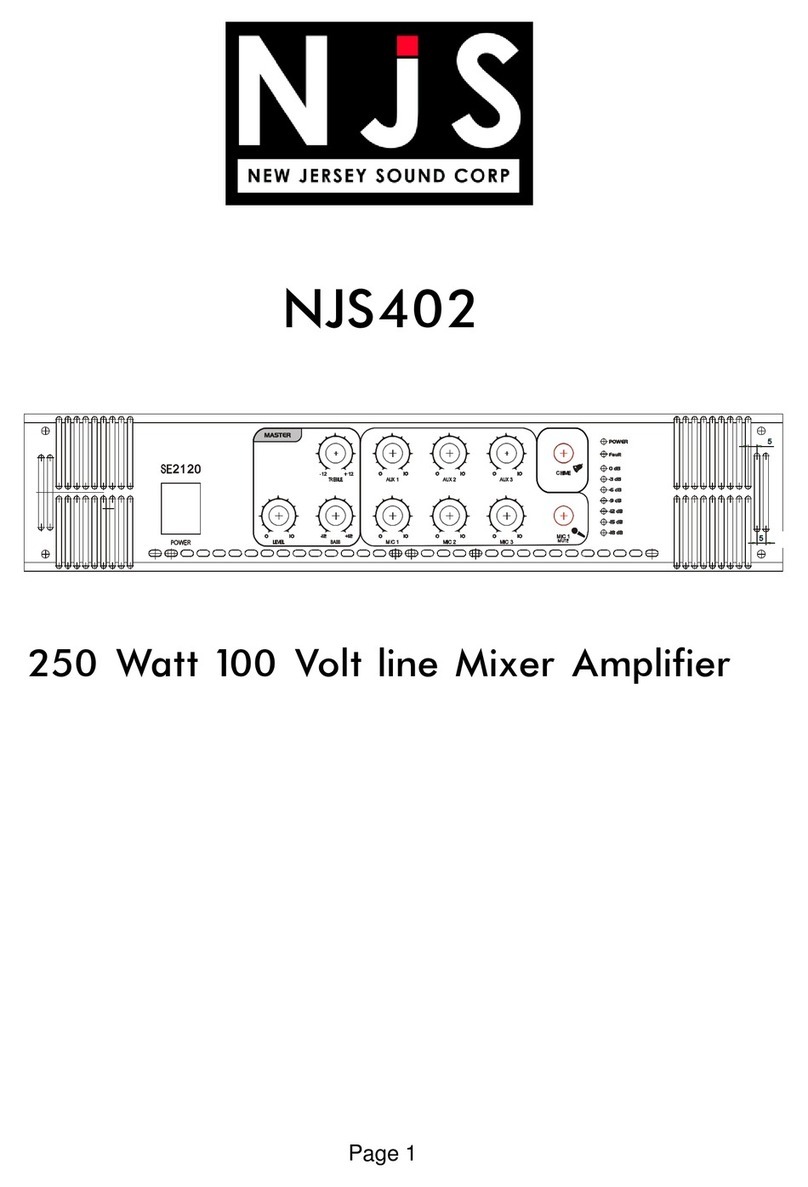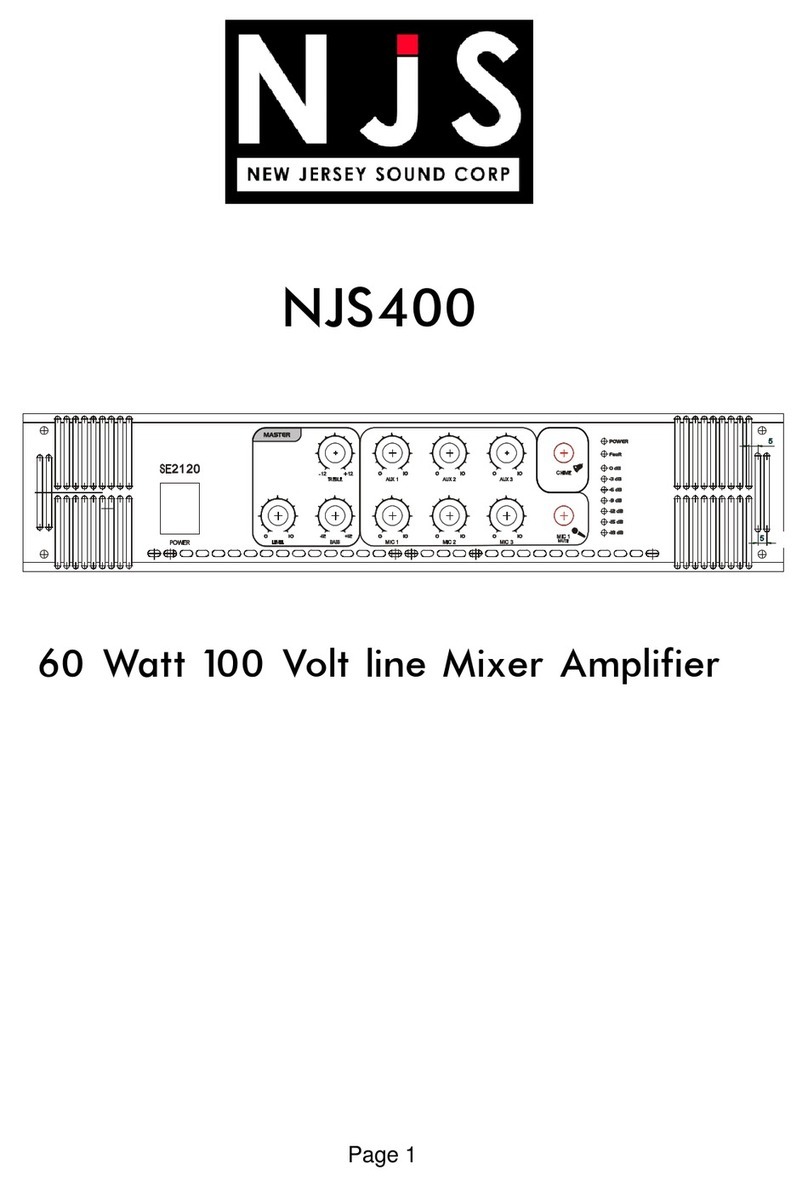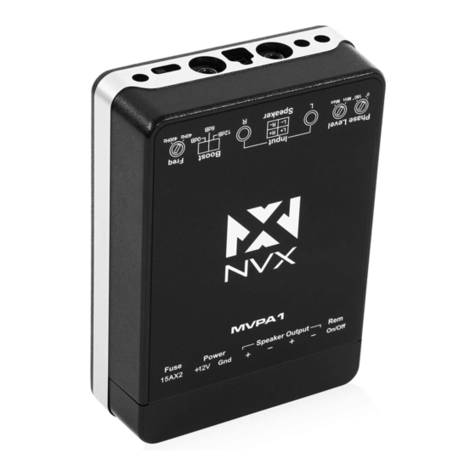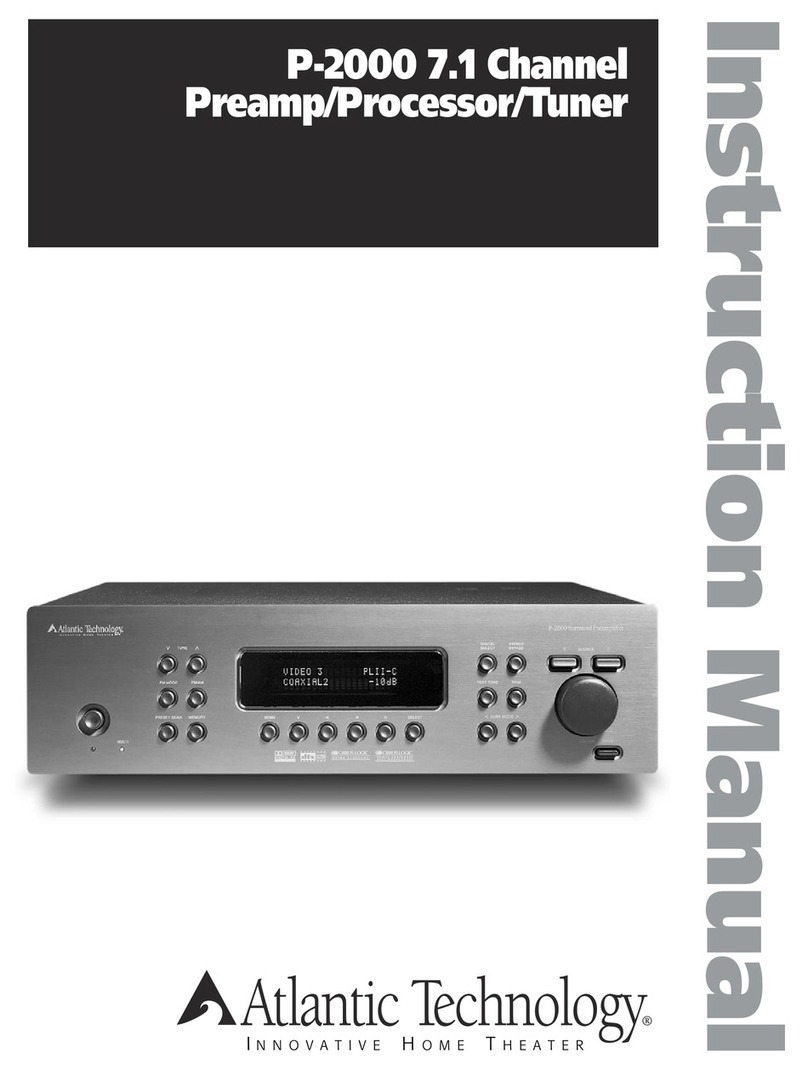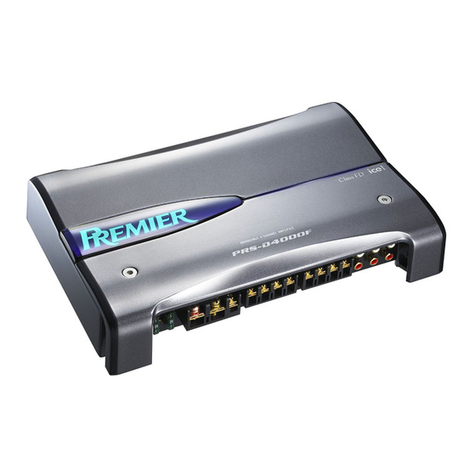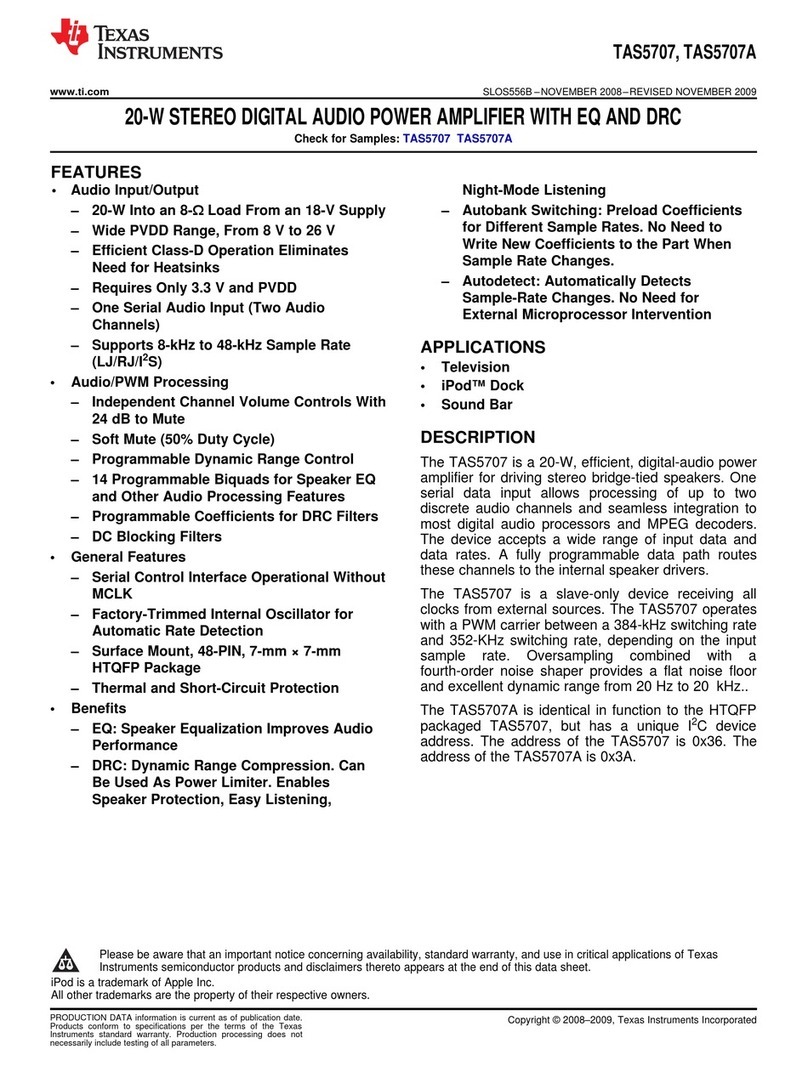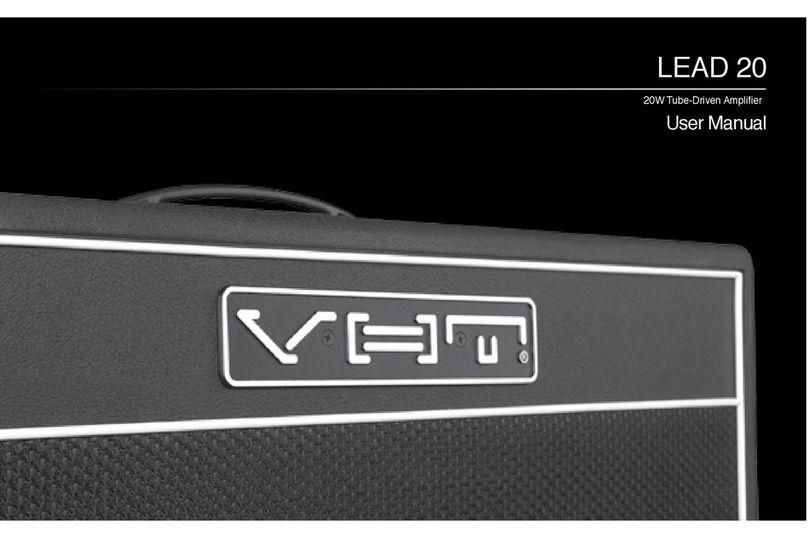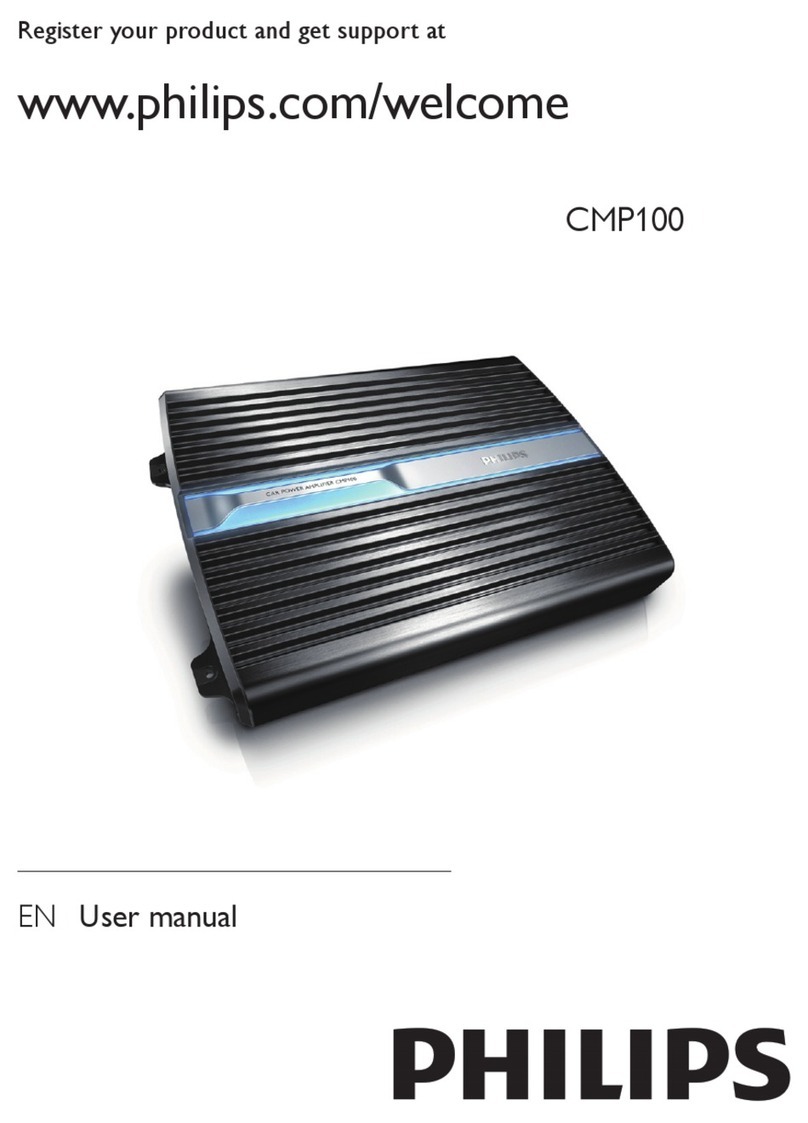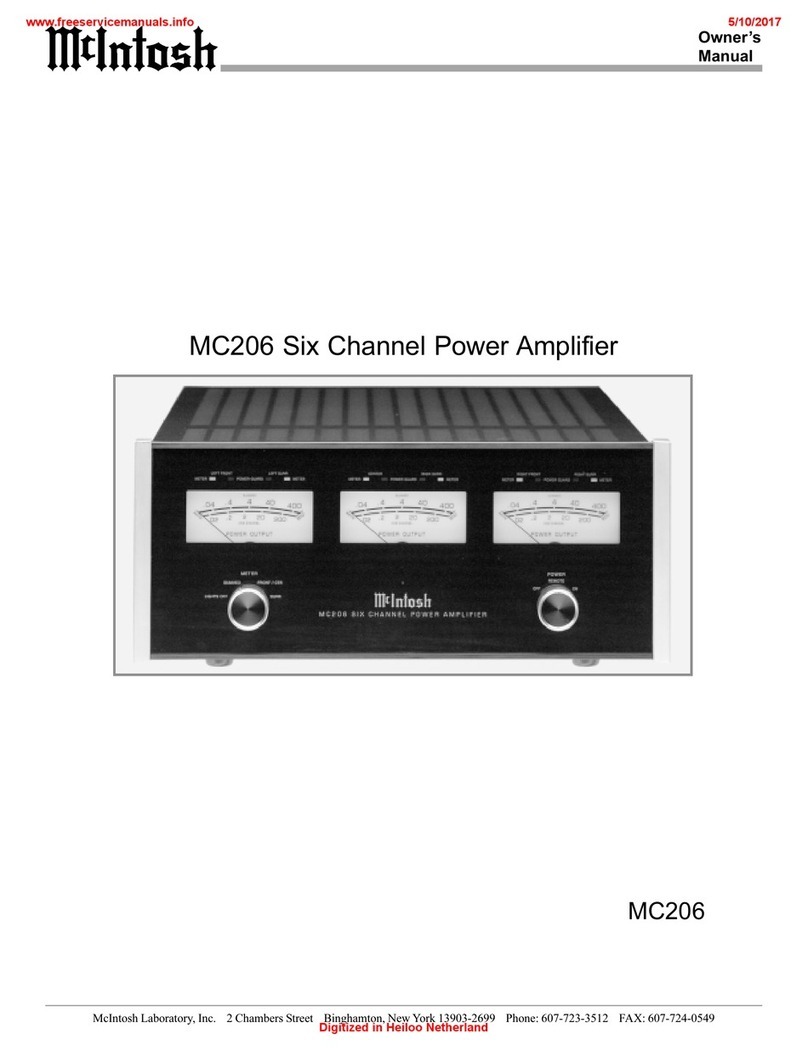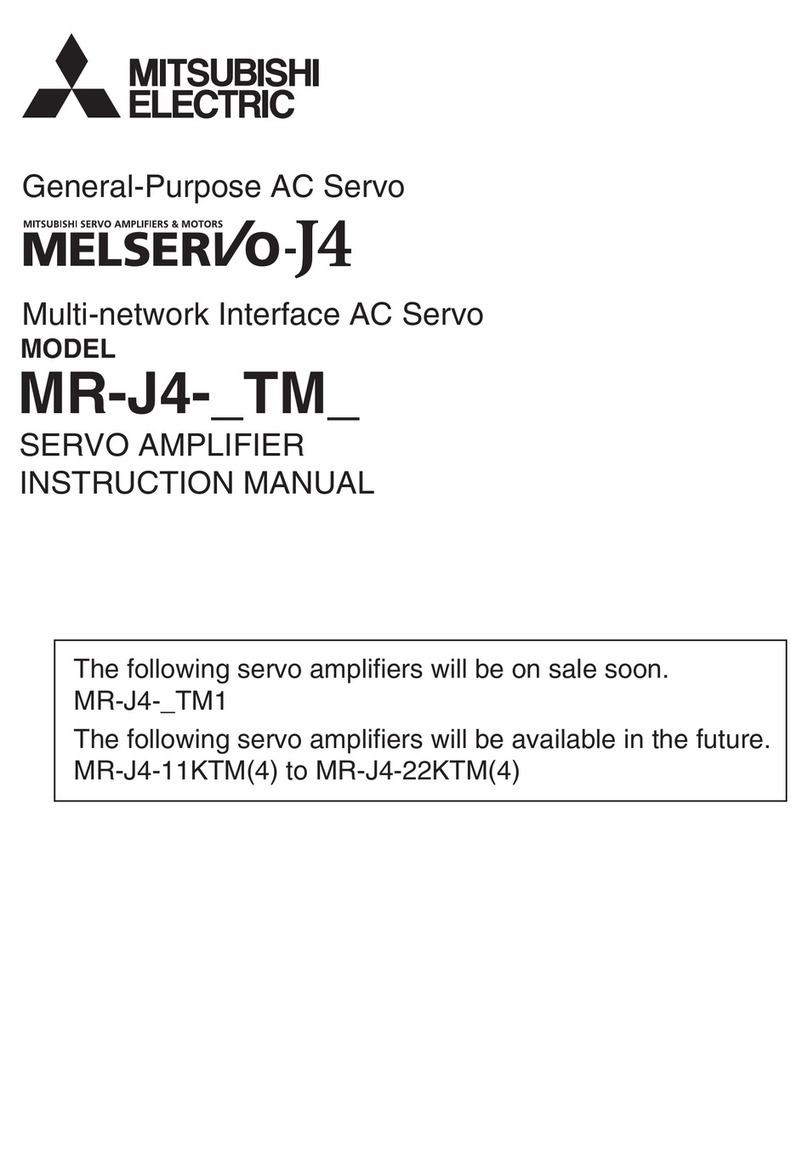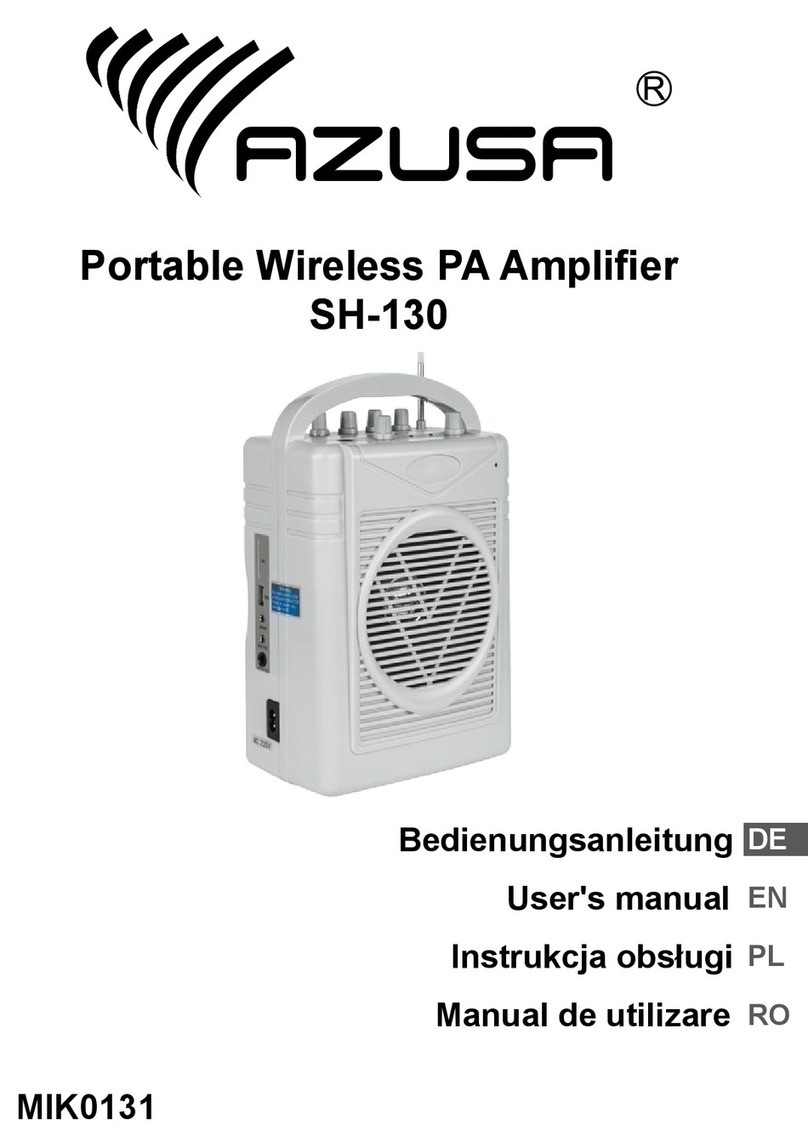NJS NJA1000 User manual

NJA1000
Stereo Amplifier
Features of the NJA1000
• 500 Watts RMS output per channel
• DC Fan for quiet, cool running
• Over temperature monitoring
• Open & Short Circuit Protected
• Loudspeaker DC protection
•
Clip
and
Signal
indicators for each channel
• Individual gain controls
Page 1

IMPORTANT
Installer and Users please note:
These instructions should be read carefully and left with
the user of the product for future reference.
Installation
T
he NJA1000 must be installed by a competent electrician in
accordance with the current IEE wiring regulations.
Connect the NJA1000 to the mains supply (nominally 230V AC).
The NJA1000 must be earthed. NEVER
disconnect the earth, even in
an attempt to prevent ‘hum’. If the earth were disconnected, it could
result in equipment connected to the input (even indirectly through a
mixer), such as microphones, becoming live in the event of a fault
(such as a liquid spillage into the amplifier).
If the mains lead is damaged, it must be replaced by the
manufacturer or an authorised service centre.
If the mains plug needs to be replaced, proceed
as follows:
•
Connect the brown wire to the terminal labelled
"L".
•
Connect the blue wire to the terminal labelled
"N".
•
Connect the green/yellow wire to the terminal
labelled with the earth symbol or "E".
•
Make sure that the cord-grip is positioned correctly (over the outer
sheath of the cable) and is fully tightened.
Fuse
(13A)
Earth
(Green
Yellow)
Neutral
(Blue) Live
(Brown)
Install the NJA1000 away from sources of moisture; avoid areas
where drinks can be spilled onto the amplifier as this may cause
serious damage.
The NJA1000 requires a "line level" signal. This is the signal level
from a mixer, a CD or tape player, or the audio output from a video
player or satellite TV receiver. This signal level is generally referred
to as +4 dBm or 1.22 V. A signal from a microphone, electric guitar
or turntable is not suitable; neither is the speaker output from
another power amplifier, which may cause damage to the NJA1000
if connected to an input. A signal of 1.22 V RMS (+4 dBm) is required
to achieve full power output with the volume controls set on
maximum.
Page 2

Inputs
Connect the input signal to the ¼” mono jack socket on the rear
panel. Use a screened cable for the input signal to avoid
interference. If connecting from a stereo output, use a ¼” stereo jack
plug to two ¼” mono jack plugs splitter lead such as G038TR (1
metre) or G038TS (5 metre).
Outputs
Connect the speakers to the 4-pole loudspeaker output connectors
on the rear panel, using the
1/+
and
1/-
terminals. Use a Speakon-
Speakon lead, or a Speakon–female XLR lead.
A Speakon–¼" jack lead or a Speakon–male XLR lead
MUST NOT
be
used with this amplifier, due to the risk of electric shock, (and is
forbidden by the Electricity at Work Regulations)
Any number of speakers may be connected to each channel, as long
as the combined impedance is not less than 4
W
. Connecting more
speakers reduces the impedance. Connecting too low an impedance
may damage the amplifier.
If one of the outputs is not being used, it is not necessary to connect
any load to it.
For speakers connected in PARALLEL on each channel:
The following combinations
MAY
be connected
Speakers Combined impedance
1 × 16
W
16
W
2 × 16
W
8
W
3 × 16
W
5.3
W
4 × 16
W
4
W
1 × 16
W
, 1 × 8
W
5.3
W
2 × 16
W
, 1 × 8
W
4
W
2 × 8
W
4
W
1 × 4
W
4
W
The following combinations
MUST NOT
be connected
Speakers Combined impedance
5 × 16
W
3.2
W
3 × 8
W
2.7
W
4 × 8
W
2
W
1 × 4
W
, 1 × 8
W
2.7
W
1 × 16
W
, 2 × 8
W
3.2
W
2 × 4
W
2
W
Page 3

Speaker Leads
The following speaker leads are suitable to use with the NJA1000.
1.5 mm2cable
2-pole Premium
Length plug Quality
1m G035AQ G035ADE
3m G035AR G035AE
6m G035AS G035AF
10m G035AT G035AG
2.5 mm2cable
Premium Professional
Length Quality Quality
1m G038AA G038LA
3m G038AB G038LB
6m G038AC G038LC
10m G038AD G038LD
15m G038AE not available
20m G038AF G038LE
Speaker leads should be chosen with care, especially with a high
powered amplifier. Current carrying capacity is not usually a
problem, but the use of too thin a cable can lead to loss of output.
The table opposite shows the maximum cable lengths for a 10% loss
in amplifier output. It is best to use a cable that is as short and as
thick as possible. At the maximum lead lengths shown below, 100 W
of the amplifier power is being lost, only 900 W will reach the
loudspeakers.
NEVER use screened lead to connect speakers to an amplifier, and
never connect the output of the amplifier to a light controller with
screened lead: use thin speaker cable.
Cable size Maximum length for:
4
W
load 8
W
load 16
W
load
0.75 mm2 (E548AC,E631) 3.5 m 7.0 m 14.0 m
1.25 mm2(E630) 6.0 m 12.0 m 24.0 m
1.5 mm2(E548AA, E630AA) 6.75 m 13.5 m 27.0 m
2.5 mm2(E548AB,E630AB 11.4 m 22.8 m 45.6 m
Page 4

A Speakon–¼" jack lead or a Speakon–male XLR lead MUST NOT be
used with this amplifier, due to the risk of electric shock.
Ventilation
ALWAYS ensure that an adequate flow of cool air is available at the
air intakes at the sides, and that the hot air exhaust on the front
panel is not obstructed. If the amplifier overheats the speakers will
be disconnected, and the "PRO" LED will illuminate. If the amplifier
is adequately ventilated, this will not happen during normal use.
If the amplifier is installed in a cupboard, make sure that there is an
adequate supply of cool air at the back of the amplifier, and that hot
air from the fan exhaust is not recirculated back to the air intakes.
The fan and air vents should be cleaned periodically to remove dust
and smoke fluid residues.
NEVER install the amplifier in a sealed cabinet.
Operation
ALWAYS connect the speakers and turn the volume controls to zero
before switching on; do not touch the speaker outputs whilst the
amplifier is running as this could result in electric shock.
Set the input level controls so that the “clip” LEDs only illuminate on
the loudest peaks when the levels on the mixer are at their highest
setting.
If the amplifier is being asked to produce more power than it can
supply it will ‘clip’ the signal, and if this happens the Clip LED will be
illuminated. In this state, the amplifier can produce an output in
excess of 1500 Watts per channel at levels of distortion up to 30%,
which could cause damage to speakers. This distorted signal has a
large amount of extra treble which can damage high frequency
units.
If the "clip" indicators are on excessively there is only one solution:
TURN THE VOLUME DOWN
.
Choosing loudspeakers.
If the amplifier is likely to be over-driven, then it is advisable to use
speakers which can handle the extra power. Use a 600 W 4
W
speaker, or, if two 8
W
speakers are connected to each channel, they
should be rated at 300 W each. Using a 200 W and a 400 W together
Page 5

may result in damage to the 200 W speaker, as they will each receive
250 W. Electrovision accepts no responsibility for damage caused to
speakers by over-driving.
When choosing loudspeakers, always refer to the RMS rating,
“music power” or “peak music power” ratings which are normally
between two and four times higher than the RMS power capability,
should be ignored. (The NJA1000 has a Peak Music Power Output
(PMPO) rating of 1700 Watts per channel)
When the NJA1000 is operating normally, the
Signal
LED will be
illuminated.
If a fault occurs within the amplifier leading to a DC condition on the
speaker outputs, the speakers will be disconnected before any
damage can occur. If this occurs, consult a dealer.
Short circuit protection.
The NJA1000 is protected against short-circuits on the outputs. If
this happens, it will limit its output current to a safe level until the
short circuit is removed. A short circuit should be removed as soon
as it is discovered, as the amplifier is not intended to be run
indefinitely into a short circuit. Short circuit protection does not
protect the amplifier from having too many speakers connected to
the output.
If speaker leads are too long or too thin, their resistance may prevent
the short circuit protection operating in the case of a short circuit at
the loudspeaker end of the lead - in this case the impedance of the
cable may be indistinguishable to the amplifier from a low
impedance speaker.
Standards
The NJA1000 complies with:
EN60065
(Electrical Safety),
EN55103
(Electromagnetic Compatibility) and
EN61000-3-2
(mains harmonic currents)
Page 6

Technical Specification
Dimensions: 19"×3½"(2U)×15½"
(483×88×390mm)
Weight: 10.5kg
Cooling: Forced air cooling
via 80mm low noise DC fan.
Power output: 500 W RMS into 4
W
at onset of clipping 300 W RMS into 8
W
160 W RMS into 16
W
Max. Output voltage: 144V peak-peak.
Damping factor: 360 at 100 Hz into 4
W
Output impedance: 0.01
W
Input impedance: 10 k
W
Input sensitivity: 1.228 V (+4dBm)
for 500 W into 4
W
Frequency response: 10 Hz to 20 kHz ±3 dB
Hum and noise: -95 dB
Channel separation: 90 dB
Harmonic Distortion: 0.1 % at 50 W into 4
W
Intermodulation Distortion: 0.1 % at 50 W into 4
W
at 50 Hz and 5 kHz
Slew rate: 10 V/µs
Power requirement: 230V AC 50/60Hz 1300VA
Inrush current: 30 A peak for 10ms
Fuse: T6.3A HBC 5×20mm to IEC127
(6.3 Amp anti-surge 5×20mm )
Connections:
Mains: IEC inlet connector
Input: ¼" jacks
Output: 4-pole Speakon connectors.
1/+ signal
1/- ground
"Speakon" is a trade-mark of Neutrik Ltd.
Page 7

Service Warranty
New Jersey Sound products are distributed by:
Electrovision Ltd.,
Lancots Lane,
Sutton,
St. Helens,
Merseyside.
WA9 3EX
Telephone: 01744 745000
Fax: 01744 745001
Web-site: www.electrovision.co.uk
Electrovision guarantees the product free from defects in materials
and workmanship for a period of twelve months.
Should this appliance be operated under conditions other than those
recommended, at voltages other than the voltage indicated on the
appliance, or any attempts made to service or modify the appliance,
then the warranty will be rendered void.
The product you buy may sometimes differ slightly from
illustrations. This warranty is in addition to, and does not affect, your
statutory rights.
If you have any problems with this product, please call our Help
Desk on (0845) 459 4816.
Page 8
This manual suits for next models
1
Table of contents
Other NJS Amplifier manuals
